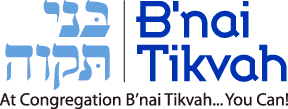After we have opened the ark, and completed our meditation (culminating in Bei ana rachetz), we participate in a very formal proclamation service. The shaliach tzibbur faces the congregation while holding the Torah. He/she says the first line of the Shema, and the congregation repeats. He/she then says “Echad el-keinu, gadol ad-nainu, kadosh shmo” “Our G-d is one, Our Lord is great. His name is holy.” And the congregation repeats. Finally he/she turns to the ark, bows, and recites “Gadlu lad-nai iti unromamah shmo yachdav” “Proclaim Ad-nai’s greatness with me, and let us exalt G-d’s name as one.”
There are three aspects of this dramatic proclamation I would like to emphasize. The first is the poetic interconnections in the language, Key words in each sentence link them to the following sentence.
Echad (“One”) at the end of the first sentence of the Shema leads directly to echad beginning the second sentence.
El-keinu in the second sentence echoes el-keinu in the first.
Gadol “Great” in the second sentence is followed by gadlu (“Make great, magnify”) in the third sentence.
And finally, echad, emphasizing the unity of G-d in the Shema, is echoed by yachadav (“as one”) at the end of the third line (and perforce the end of the entire proclamation).
Second, it is stunning that at this moment when the Torah is brought out of the ark, the proclamation says nothing about the Torah itself, but rather refers only to the oneness and greatness of G-d. Perhaps the rabbis were trying to avoid turning the Torah itself into an idol. They wanted to remind us that what we have in our hands is only a representation of G-d’s word, one limited by our ability to comprehend it, rather than the unfathomable mystery of G-d him/herself. Or perhaps they were trying to say that the whole purpose of the Torah—reading it or following it in general—is to “magnify and sanctify” G-d’s Presence on earth.
Third, the juxtaposition of echad and yachdav (from the same root in Hebrew), is meant to teach us something crucially important. There is some kind of mysterious link between the “oneness” of G-d and the “oneness” of our community. If it is our role to stand as witnesses to the unique unity of G-d, the vehicle through which we do so is our community. That is the way we are “as one.” And the degree to which we succeed in building our community is how we measure our success in the holy task of bearing witness.
